






Search websites, locations, and people

School of Life Sciences LAB SHOW
Uncovering the Secrets of the Brain — From MIT to Westlake
Chi Zhang
17, 2020
Email: fengyi@westlake.edu.cn
Phone: +86-(0)571-85270350
Office of Public Affairs

“Neuroscientists need to create high-quality images of the brain, and we give them tools and colors to do it,” says Dr. Kiryl Piatkevich, a distinguished researcher and principal investigator at the School of Life Sciences at Westlake University. He is a leader of the Molecular Bioengineering lab, which focuses on inventing new cutting-edge molecular tools and imaging technologies for analyzing and mapping complex biological systems such as the brain... Kiryl’s laboratory has two special ways to help biologists look into the brain: physical magnification and colorful fluorescence.
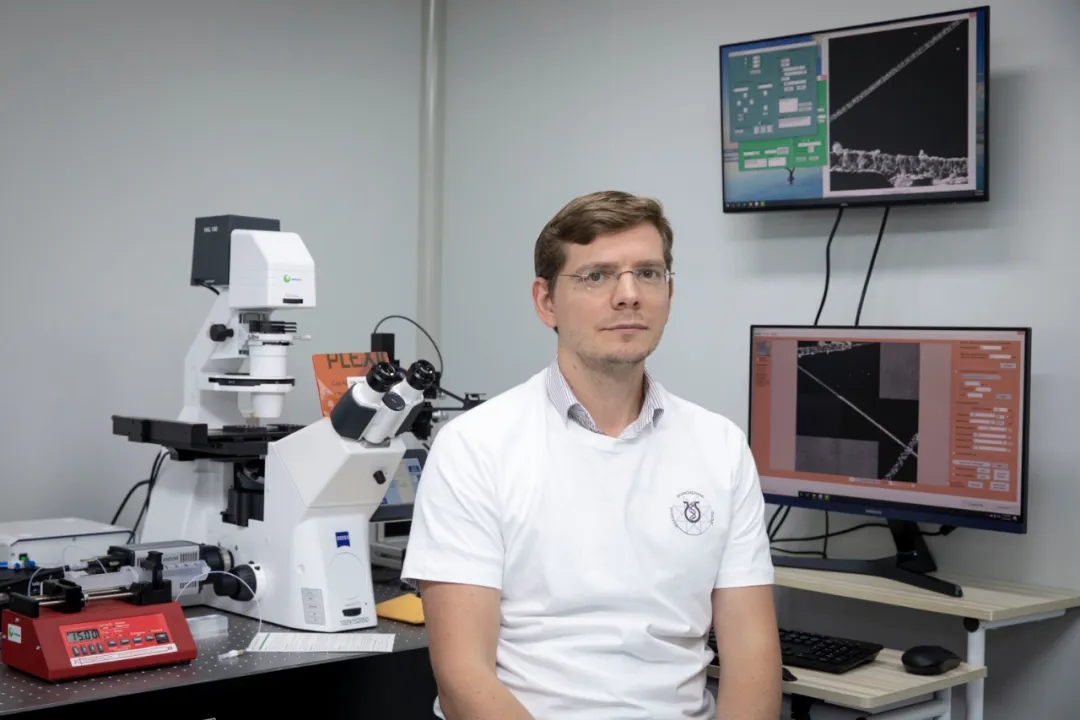
Kiryl Piatkevich
The “Magnifying Gel” to blow up the brain
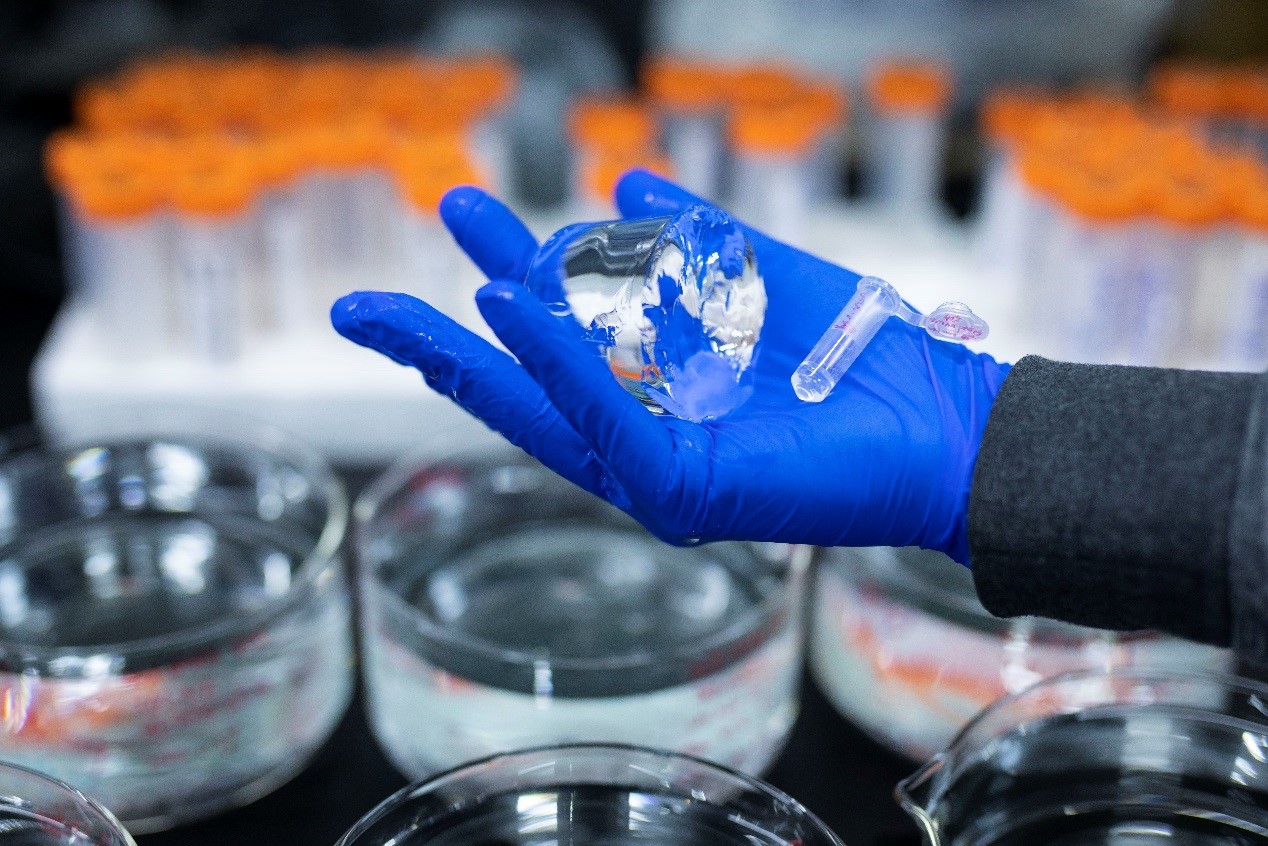
Hydrogels developed in the lab can expand over 10-fold in linear dimension preserving high mechanical stability
In one corner of his lab, petri dishes with various hydrogels are arranged on a bench. Expanding isotropically after absorbing water, new hydrogels are perfect to physically magnify biological tissue samples.
For this, the sample – a brain (like that of a fruit fly or mice) or other biological tissue – is soaked in a special solution. The solution with the biological sample is then turned into a transparent gel via a process called “controlled polymerization”. Next, this tissue-hydrogel composite is placed in pure water, causing the gel to absorb water via another process called “osmosis” which makes the tissue-hydrogel swell enormously. As it swells, the specimen inside gets physically magnified. So, if the sample was a brain, it is like blowing it up; but while increasing in size, the brain keeps its original shape.
To ensure that internal structures preserve their relative shape after expansion, a few special chemicals are added to protect biomolecules inside samples.
Currently, the expansion technology of the Piatkevich lab can achieve a linear expansion factor of 8, and a volumetric expansion factor of approximately 700. This technique is called expansion microscopy. In addition to using conventional microscopes, expansion microscopy enables scientists to get high-resolution views when looking into nerve cells.
Fluorescent Probes
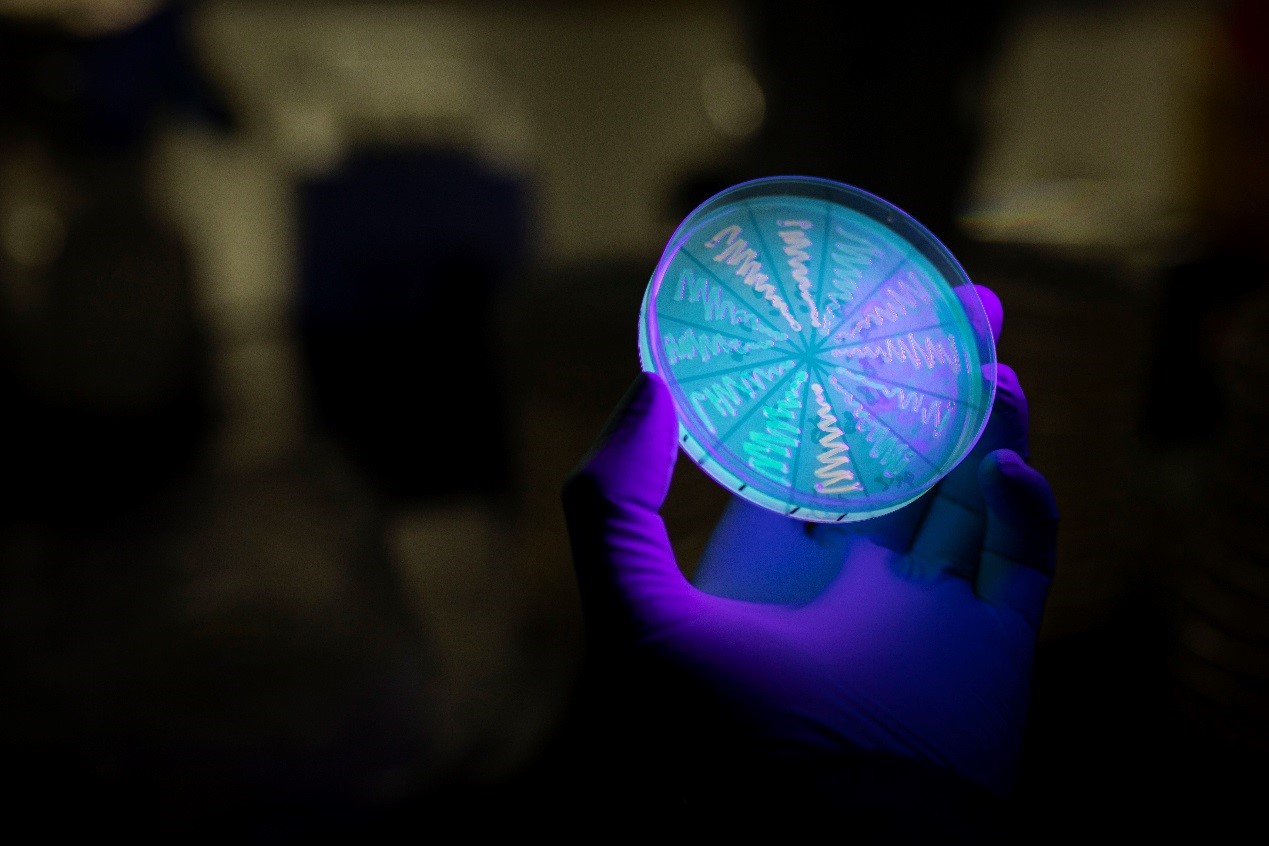
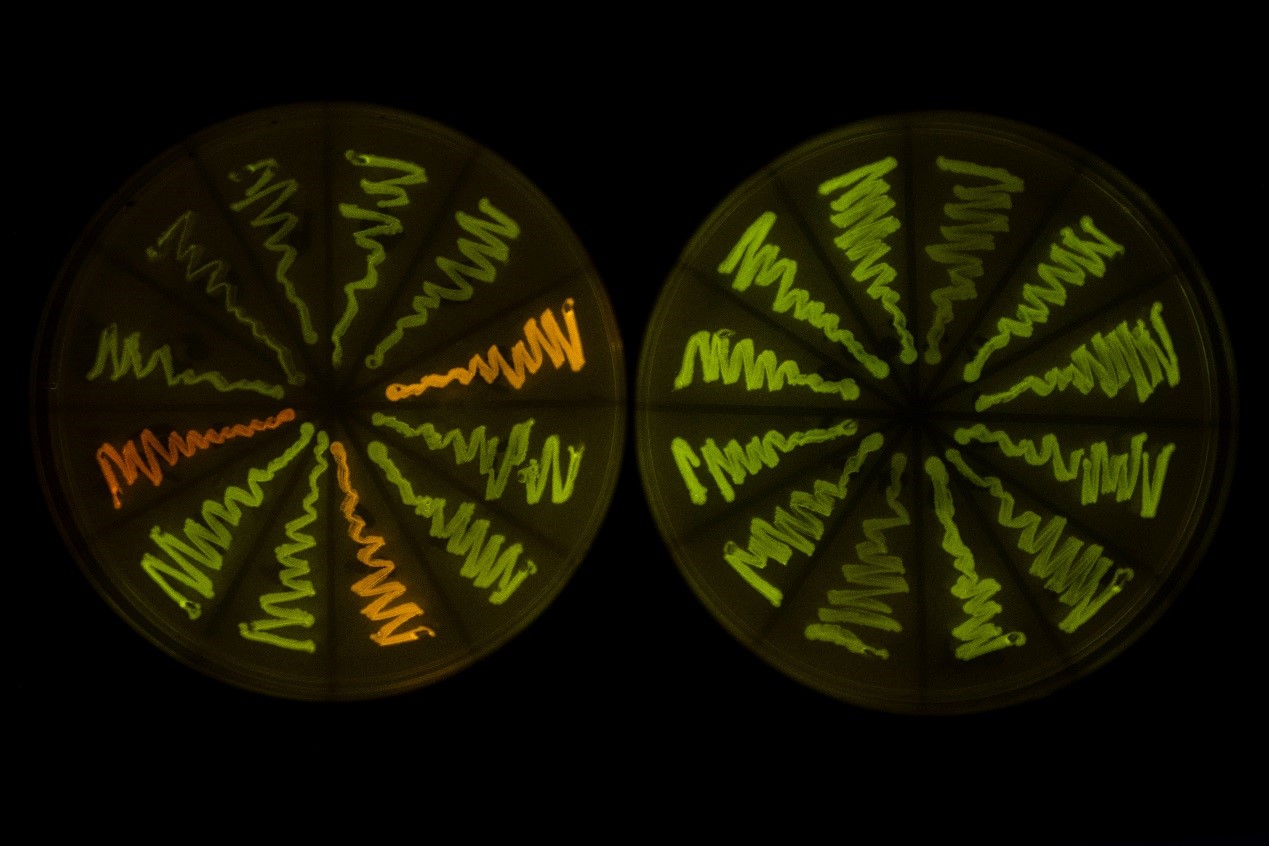
Screening for advanced fluorescent probes expressed in E. coli bacteria
In another corner of the lab, Kiryl is using E. coli bacteria to develop new biological stains with diverse fluorescence. First, genes that encode fluorescent molecules are delivered into the E. coli. After the genetically modified E. coli. bacteria have grown on the Petri dish, they start to glow in different colors. After imaging and analyzing all varieties of the generated E.coli (up to 100,000,000 unique cells), the E. coli with the brightest fluorescence are selected. The genes of these brightest glowing E. coli are then extracted and injected into mice. In the mice, the fluorescent molecules attach themselves to specified cells enabling their visualization and imaging using expansion microscopy. Thus, on one hand, expansion microscopy enables scientists to get a larger picture of things, whereas, on the other hand, the fluorescent molecules enable scientists to get a distinguished picture of things.
“In some way, I am more like an artist than a scientist: I paint the brain in different colors and then magnify it”, says Kiryl with excitement, pointing at the colorful samples under the microscope.
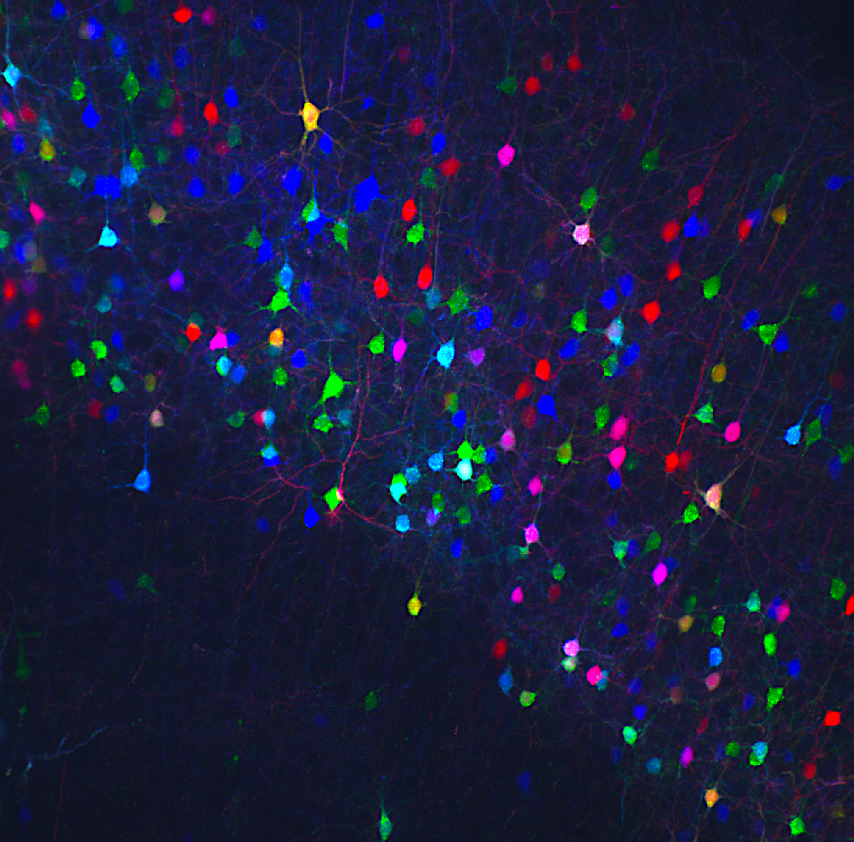
Brain cells, also called neurons, highlighted with spectrally diverse probes developed by Kiryl
“All Roads Lead to the Brain!”
The brain is the most mysterious and complex human organ. Research on the brain could answer many questions from practical questions about causes and treatments of diseases to questions about our conscience and who we are. To understand such complexity, an interdisciplinary approach is indispensable.
Kiryl himself is a scientist with a multidisciplinary background. He studied Chemistry in his undergraduate, did his PhD in Biotechnology and Biochemistry, and later, conducted research in neuroscience at McGovern Institute for Brain Research and Media Lab at MIT in the US. After he came to Westlake University, Kiryl met many new like-minded teammates and discovered that his passion for brain research has been inspiring his endless imaginations.
“All roads lead to the brain!” Kiryl concludes, referring both to the function of the nervous system and to the way in which brain science brings researchers from different disciplines together.
RELATED
LAB SHOW
Uncovering the Secrets of the Brain — From MIT to Westlake


















